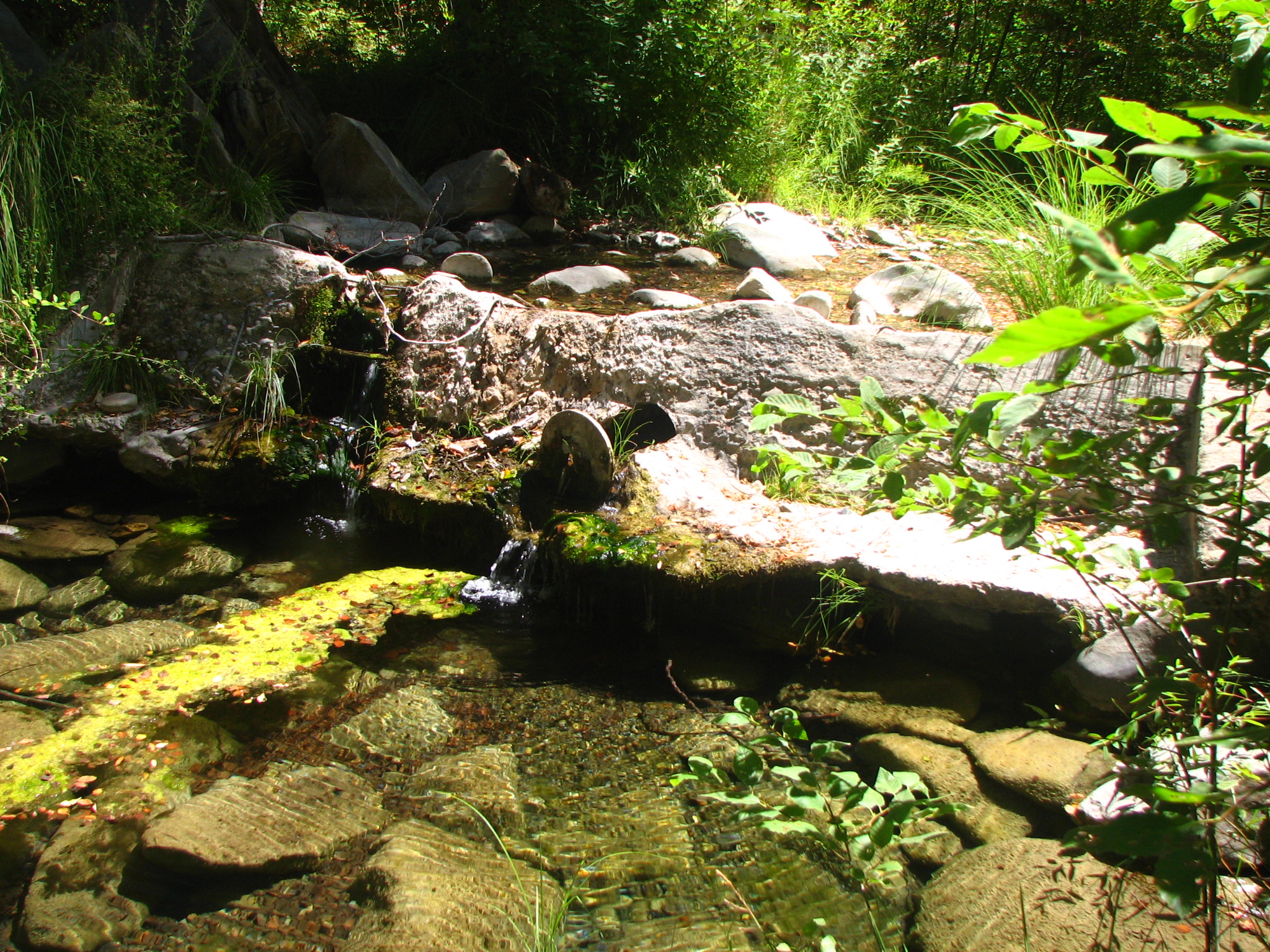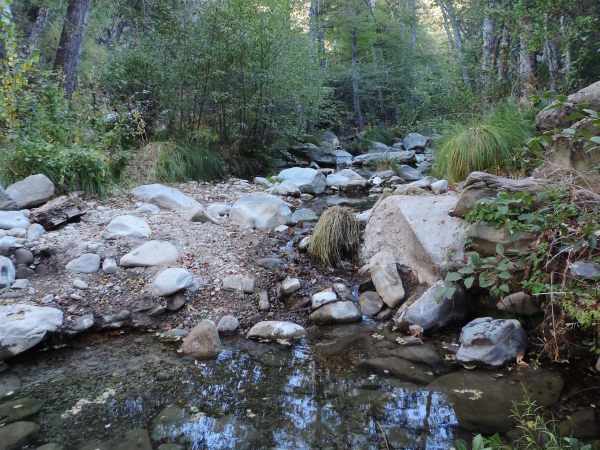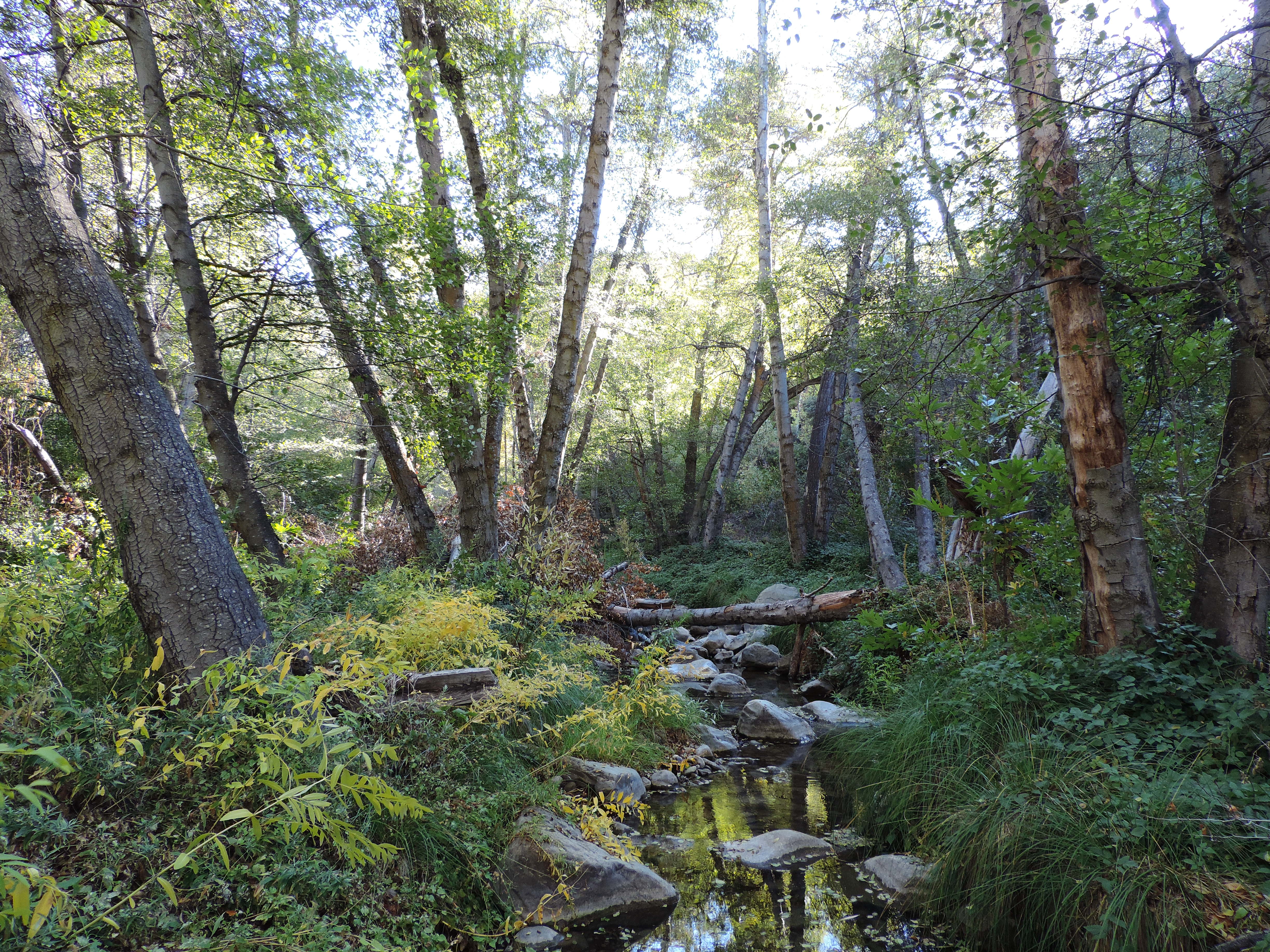Late last month, a small team consisting of representatives from the U.S. Forest Service, NOAA, and the California Conservation Corps, opened up an additional seven miles of spawning habitat for steelhead trout by removing a small concrete barrier on Lion Creek, a tributary of the Sespe Creek. The dam was originally constructed in 1940 to provide water for the nearby Middle Lion Creek Campground, but sedimentation has rendered the dam defunct for decades now.

Lion Creek Dam
This tributary is one of the few remaining places in the forest that still has water, and is among the most important watersheds in our area. A study done by Stoeker Ecological found that the Sespe drainage (Lion Creek included) should receive the highest level of protection and rehabilitation, making this a highly important dam removal despite its size. As a testament to this, before work began, California Department of Fish and Wildlife found 65 young trout in pools below the dam, which had to be moved further downstream and out of the demolition zone. After sensitive species were moved from the area, demolition took place by hand, and the team had to wheelbarrow debris back to Middle Lion Campground which was nearly half a mile away.

Remnants of Lion Creek Dam
This dam removal follows the recently approved Southern Steelhead Recovery Plan, which empahsizes the removal of dams and other impediments around the Los Padres National Forest to restore steelhead access to native spawning grounds. Furthermore, in order to better comply with the standards of the recovery plan, the U.S. Forest Service has hired a new fisheries biologist to help lead and inform future barrier removals. However, dam removal does not only benefit the steelhead. Removing dams means healthier streams and more resilient habitat, and by increasing a habitat’s resilience, we can help habitats resist detrimental change. In light of this current drought, higher habitat resilience means more options for species like steelhead trout and red-legged frogs when things start to dry out.

Lion Creek
ForestWatch is incredibly excited to see the Forest Service and its partners carrying out this project, and will continue to work with stakeholders to identify other priority barriers for removal.







Comments are closed.